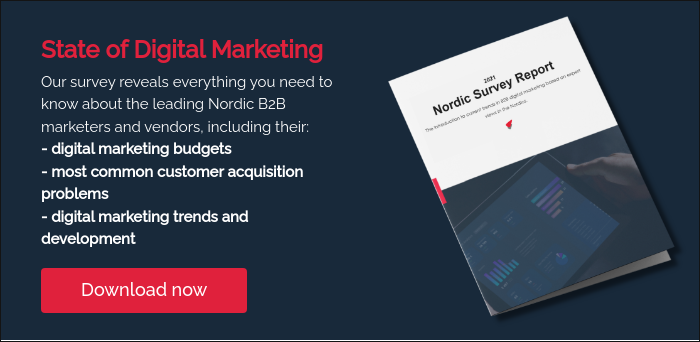The story of how marketing has changed over the past 30 years is a tale of adaptability and innovation, marked by an ongoing quest for better ways to reach, engage, and convert potential customers. As we dig into this remarkable journey, we find ourselves amid a digital revolution, a phase where data analytics has become the pivot around which successful marketing strategies revolve.
The marketing landscape has undergone dramatic changes, sparked by rapid technological advances. Traditional methods, where marketers relied on intuition or rudimentary data sets to guide their strategies, have given way to a more systematic, data-driven approach. Today, data analytics stands as a cornerstone in this new marketing paradigm.
Data analytics in marketing came into the limelight with the advent of digitalization and the internet, drastically transforming marketing strategies worldwide. It has bridged the gap between businesses and customers, offering in-depth insights into consumer behavior, preferences, and purchasing patterns. This trend has been fueled by the ever-increasing volumes of data generated through digital interactions and the advancements in technologies to process this data effectively.
We’ve come a long way from the spray-and-pray marketing tactics of old. The rise of data analytics has enabled businesses to move away from broad, untargeted campaigns towards more personalized, precision marketing. Marketers can now pinpoint their target audience, anticipate their needs, and tailor their marketing messages to resonate with individual consumers on a personal level. The result? Enhanced engagement, increased customer loyalty, and improved ROI.
But the role of data analytics isn’t confined to delivering personalized experiences. It provides businesses with a competitive edge, helps identify market trends, and facilitates strategic decision-making. It equips marketers with the ability to track performance, measure the effectiveness of marketing campaigns, and continually optimize for better results.
Data analytics has completely changed how marketers strategize and execute their campaigns, setting the stage for a new era of data-driven marketing. And this transformation is ongoing. As technology continues to evolve, so too will the ways marketers leverage data to drive their decisions and strategies.
Understanding data analytics in marketing
One cannot truly understand data-driven marketing without understanding data analytics. At its core, data analytics is the science of analyzing raw data to extract meaningful insights, making sense of the sea of information that inundates businesses on a daily basis.
Within the context of marketing, data analytics delves into customer and business data to understand market trends, consumer behavior, and the overall effectiveness of marketing efforts. Leveraging techniques from machine learning, statistics, and computer programming, it transforms raw data into actionable intelligence, fostering informed decision-making and predictive forecasting.
There are four main types of data analytics that marketers can wield, each serving a different purpose, but together creating a comprehensive analytical approach:
Descriptive analytics
As the name implies, descriptive analytics describes what has happened in the past. It provides a hindsight view of key metrics and performance indicators, offering an understanding of previous marketing efforts and their outcomes.
Diagnostic analytics
This type of analytics digs deeper into the ‘why’ behind past results. By examining data from different perspectives, diagnostic analytics helps marketers understand the reasons for past success or failure, enabling them to learn from their past strategies.
Predictive analytics
Looking ahead, predictive analytics leverages statistical models and forecasting techniques to predict future outcomes based on historical and current data. It equips marketers with probable scenarios, helping them anticipate market changes and consumer behavior.
Prescriptive analytics
The most advanced form, prescriptive analytics, suggests possible actions to take for optimal results. By considering multiple variables and potential consequences, it guides decision-making and future marketing strategies.
The common thread linking these analytics types is their shared goal: to drive smarter, data-informed decisions. By integrating these different analytical methods, businesses can gain a comprehensive understanding of their performance, the market environment, and their customers.
The importance of data analytics in marketing extends beyond pure analysis. It is the foundation upon which businesses can experiment, innovate, and continually optimize their marketing efforts. In a dynamic digital landscape, data analytics arms marketers with the insights they need to stay relevant, competitive, and growth-oriented.
In the next section, let’s look at the power of InlineMarket’s sales and marketing analytics tools and how they can supercharge your data analytics efforts.
InlineMarket’s sales and marketing analytics
Having established the critical role that data analytics plays in modern marketing, the question then becomes: how can your organization harness this power effectively and efficiently? Enter InlineMarket’s sales and marketing analytics tools.
At InlineMarket, our DevOps team has put endless resources into creating a cutting-edge analytics platform that’s specifically designed to facilitate the extraction of actionable insights from your marketing data. By putting the power of artificial intelligence to work, our analytics tools go beyond data aggregation and reporting. They provide marketers with a deep, nuanced understanding of their customers and campaigns, leading to better strategic planning and execution.
The heart and soul of our sales and marketing analytics is the concept of AI-powered solutions. These tools employ advanced algorithms and machine learning techniques to process, analyze, and interpret vast amounts of data quickly and accurately. What this means for marketers is less time spent on data wrangling and more time implementing strategic decisions based on insights.
Our tools are designed to benefit your marketing strategy planning. First, they provide real-time visibility into your marketing performance across multiple channels, revealing patterns and trends that can inform your tactical adjustments. Second, they offer predictive capabilities, enabling you to forecast future performance based on historical data, empowering you with anticipatory insights.
We designed our tools to be user-friendly and intuitive, eliminating the need for complicated technical expertise and allowing marketers to focus on what they do best, which is crafting compelling campaigns that resonate with their target audience. The platform’s visualized dashboard presents data in an easily digestible manner, making insights easier to understand and accelerating your decision-making process.
At InlineMarket, we take data security seriously. As Microsoft Partners, we benefit from the reliability and robust security offerings from Azure. We put stringent protocols in place to protect your data and comply with industry security standards. That means you can confidently use your data without worrying about security risks.
The power of our sales and marketing analytics lies in its ability to transform raw data into a treasure trove of actionable insights. This invaluable resource enables marketers to make informed decisions, optimize their strategies, and drive business performance, paving the way for marketing success.
In the next section, let’s look at the future of marketing and the role of data analytics in shaping it.
Preparing for the future of marketing
As the marketing landscape continues to evolve, it’s clear that data analytics will continue to be a defining factor. But with this evolution comes new challenges and opportunities. So, how can marketers prepare for and adapt to this increasingly data-driven future?
Committing to continuous learning
The first step is a commitment to continuous learning. This applies not just to the acquisition of technical skills related to data analysis, but also to an understanding of evolving consumer behaviors, emerging trends, and changing technologies.
The pace of digital evolution requires marketers to remain adaptable and flexible, always ready to learn and innovate. This could involve participating in professional development programs, attending industry conferences, or simply staying up to date with the latest marketing research and literature.
Leveraging AI and machine learning
Secondly, embracing emerging trends such as AI and machine learning can significantly enhance data analytics capabilities. These technologies aren’t just buzzwords; they offer the potential to revolutionize the way marketers interact with and interpret data.
AI, for instance, can automate time-consuming tasks, freeing up marketers to focus on strategy and creativity. Machine learning, on the other hand, can identify patterns and insights from data sets too large or complex for humans to tackle effectively.
Streamlining with the right tools
Finally, the power of these technologies can only be fully unlocked with the right tools, like those offered by InlineMarket.
Our sales and marketing analytics platform is designed to integrate seamlessly with these emerging trends, making it easy for marketers to leverage AI and machine learning to their advantage. We constantly update it so that you can stay ahead of your competitors and stay equipped with the most advanced and effective data analytics tools available.
Preparing for the future of marketing means embracing data analytics, staying informed and adaptable, and choosing the right tools to navigate the digital landscape. As we look to the future, it’s clear that data-driven insights will continue to be the bedrock of successful marketing strategies. The companies that will thrive are those that can harness the power of their data to inform, innovate, and inspire.
Marketing, as we know it, has been dramatically transformed by the advent and evolution of data analytics. Data is no longer just a by-product of marketing activities; it’s the driving force behind successful, innovative strategies.
Our sales and marketing analytics tool harnesses AI-powered solutions to provide you with the insights you need for effective planning and strategy. We’ve looked into the future of marketing, emphasizing the importance of continuous learning, leveraging AI and machine learning, and choosing the right tools to stay at the innovative edge of the industry.
The world of marketing will continue to evolve; of that, nobody has any doubt. It will be shaped by the ongoing data revolution. But in order to stay competitive, it’s essential to invest in tools that not only keep pace with these changes but also empower you to harness the power of your data.
If you’re ready to take your marketing strategies to the next level, we invite you to book a demo with InlineMarket. Experience firsthand how our sales and marketing analytics can completely change your approach to data, drive your decision-making processes, and position you at the forefront of the marketing industry’s future.
Stay ahead of the curve—empower your marketing with data analytics today.









